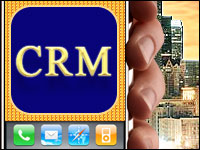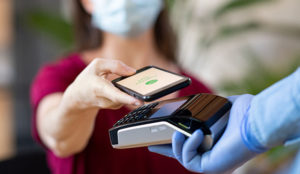
Mobile devices are changing both how customers get in touch with call centers and how companies respond to those calls.
The days of customers sitting at kitchen tables on landlines waiting for agents to answer their calls are gone. Now, they’re calling from smartphones and clicking on apps, and call centers are adapting to this new mobile reality.
“Mobile is increasing,” Mitch Lieber, principal consultant at Lieber & Associates, told CRM Buyer. “It’s used in all arenas, and the call center is no exception.”
Mobile is affecting both sides of the call center equation.
“You’ve got two distinct sides to the reality of mobile,” Kathleen Peterson, founder of PowerHouse Consulting, told CRM Buyer. “You’ve got the user, who wants to be able to interact with mobile device, and you’ve got the call center that treats it simply as a different channel.”
Mobile Customers
“Increasingly, we’ve all been in a situation of being on a mobile device and calling a call center,” said Lieber.
Call centers need to take these mobile customers into account when they’re dealing with customers — even when it comes to something as simple as responding to dropped calls.
“One thing that’s important if you’re interested in providing good customer service is to get the phone number of the person calling,” said Lieber. “If someone is on a cell phone talking with you and gets disconnected, it can be incredibly frustrating.”
Customers are also often contacting call centers via mobile sites and apps, and these must be well-designed so customers can get the information they need and, if necessary, reach customer service. Well-designed sites and apps, in fact, can cut down on the number of calls that end up at a call center.
“From a customer perspective, mobile versions of your site that are searchable improve the chances that people will find the answer to their questions on their mobile device on your site before they call,” Colin Taylor, CEO of The Taylor Reach Group, told CRM Buyer.
Apps, too, offer the opportunity both to provide information and offer a way to contact a call center.
“Businesses are creating apps all the time,” said Peterson. “It’s an alternative method of executing some task or activity, but it may or may not reduce calls to the call center. The need for services is elastic, and the more options you provide, the more options the customer will use.”
Some companies even offer smartphone callers visual menus, which allow them to navigate more quickly through the interactive voice response (IVR) menu to get where they need to go.
“With smartphones, it’s possible to take audio IVR and have that presented as visual IVR, so that callers can see and click and skip ahead to the end goal,” explained Taylor. “It saves the customer a bunch of time. Instead of spending three layers navigating to where you want, you can instantly jump ahead. It saves the company money, because it shortens the call and moves people through the IVR more quickly.”
A Moving Center
Call centers themselves, as well, have been impacted by mobile devices.
“People are using their mobile phones to access call center data, particularly with cloud-based systems,” said Lieber. “As more companies and managers and supervisors access with mobile devices, there will be a demand for better interfaces for mobile devices. You’re getting your sports scores on phones, so why not your service level?”
Call center managers and team leaders spend much of their time walking around call centers, talking with and coaching agents. Increasingly, they’re carrying along tablets, so they can access information and data without having to return to their desks.
“Every minute that a supervisor is sitting at a desk staring at a computer screen is a minute that they can’t help their agents,” said Taylor. “It helps them be more accessible to their staff.”
Mobile devices can even improve the communication between agents and their employers.
“They can manage their schedule and time lines without having to talk to their supervisor,” said Taylor. “Employers can send alerts and text messages to employees. It allows them to operate more in real time, and it can be a far more efficient system on the call center operation side. At the management level, it improves the sharing and dissemination of information.”






















































